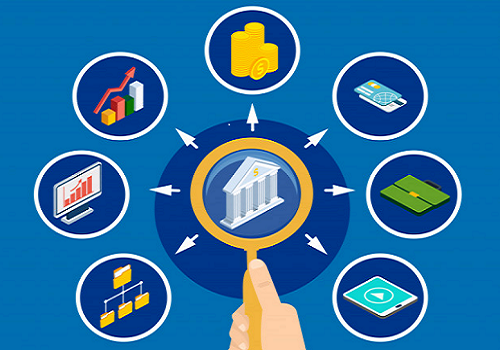
A major part of banking customers likes to have a seamless online experience similar to e-commerce stores. Customer’s expectations are not just limited to understanding them but also provide excellent service and customized services. When financial institutions team up with FinTechs and retail, they can build a powerhouse appeal for your brand. Let us see about retail Banks compete with Fintech startups.
The need for personalization among the users
Retail banking institutions are feeling the heat from financial institutions and upstart competitors. In the present scenario, the fintech companies provide a user-friendly, low-cost alternative for nearly any payment, transaction, borrowing, investment, and savings. Some investment firms such as Schwab, Fidelity, and eTrade utilize apps and websites to poach specific potential and credit-worthy customers with exceptional services beyond the bond offering, traditional stock offering like loans and checking accounts.
Similarly, most retail banks have taken a multitude of measures to make transactions more convenient and more accessible by partnering with banks and fintech firms to enhance customer satisfaction over the last decade.
With proper usage on a large scale, retail banks possess the potential to shift the data they already own into a competitive benefit. Personalization is usually seen as one aspect of the requirement to transform how retail banks function in the digital world. The key aspect is the omnichannel combination of offline and digital. For this reason, most of the banks focus on optimizing their offline operations to only critical things that humans can handle. Other transactions will be shifted to their digital channels. By deepening this digitalization, banks can get to a better position in offering personalized deals that suit everyone’s requirements.

How personalization boosts revenue growth
Statistics state that banks can achieve more revenue growth by appropriately personalizing their interactions with customers. In practical terms, personalization means delivering the right experience to the right individual at the right time. Banks that can achieve this success in personalization can rebuild trust and enable a more beneficial and deeper financial relationship. In simple terms, revenue growth through personalization can be termed as “frequency of interaction along with the impact each factor brings to the trustworthy relationship with clients.
– Personalized service can drive more sales communication
– Every customer and their needs are unique, so bespoke services will yield better results than the standard services
– Reports states that personalization can boost the branch sales by 20% to 30% in three years
Dynamic view of every customer: Bank’s system will provide a single and organization-wide view of every customer. It also offers a dynamic view that reflects every customer at any moment. The ability to continuously learn about each unique client and expand that knowledge over time and the recursive learning power required for customization creates a built-in advantage for those who use it early.
Targeted Focus: Customer offerings are targeted at a specific customer category. They identify ideal customer behaviors as well as a strategy to encourage them. Recursive Learning and Analytics Engine enable flexibility and develop tailored offers and communications that change over time by utilizing machine learning and methodical experimentation.
Effective personalization entails a fine-grained usage of data that extends beyond demographic or location-based targeting. For instance, to give recommendations personalized to individuals rather than large market segments, real-time data on consumers’ financial histories and behavior is required. Banks must know who their clients are and how their needs evolve as their lifestyles and circumstances change.
Leading banking service to provide personalized digital service
The following examples highlight how retail banks can position themselves as trusted consultants and counselors rather than just transactional service providers by using personalized digital material.
Most financial institutions are already assisting financial institutions in optimizing their existing data by incorporating fresh perspectives to understand better and predict their clients’ current and future needs.
Flybits
Flybits, a Canadian firm that creates contextual intelligence-based personalization solutions. Flybits help finance providers better understand and segment their clients by triaging data, information, and context. Furthermore, these data can be channeled into digital experiences with highly interactive content and recommendations tailored to each individual.
BankBuddy
Some businesses are even experimenting with new ways to communicate with customers and create digital experiences. Bank Buddy, a firm based in the United Arab Emirates, is leading cognitive banking by including features like voice IVR, natural language processing, multilingual bots, machine vision, and AI-powered suggestions. Customers can use the BankBuddy Whatsapp bot to conduct transfers, payments, remittances, and loans on their phones without downloading any banking apps. A consistent customer experience that seems as natural and intuitive as conversing with a buddy.
Canadian Bank
A prominent Canadian bank has developed several technologies that deliver individualized insights and recommendations to consumers. For example, TD’s chatbot-enabled mobile app can analyze customers’ account and transaction records that provide personally targeted advertising and information, such as train schedules for commuters who use a specific station regularly or exchange rates and places for frequent international travelers. TD collaborated with fintech firm Moven to develop MySpend, an app that allows customers to follow their spending patterns and receive real-time notifications.
Mint
Mint, an online service that tracks and manages a user’s finances, also offers personalized advice to make its clients’ lives easier financially. Mint’s mobile app can send you notifications concerning low bank balances, bill reminders, and service provider recommendations. Furthermore, its MintSights platform can identify patterns in customers’ financial histories and deliver customized offers and recommendations, such as cash flow management advice. The idea, according to Mint, is for the app’s personalized recommendations to improve and grow over time with each customer.
SpeciFi
SpeciFi strives to provide a more tailored financial experience. Investors are prompted to give information about their risk tolerance and aims at the outset. The platform then develops a personalized portfolio that rebalances itself in response to changes in its choices, behavior, or the market. Meanwhile, a free program may analyze the user’s outside investing accounts and give specific improvement recommendations.
No Comments